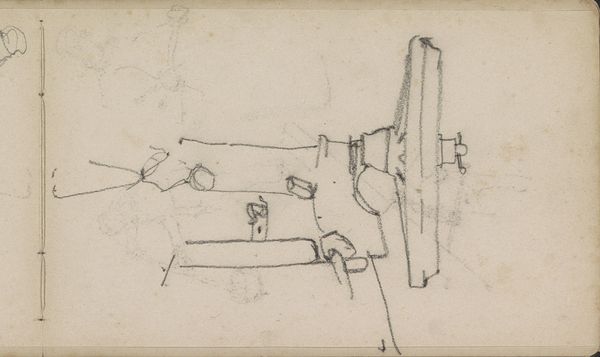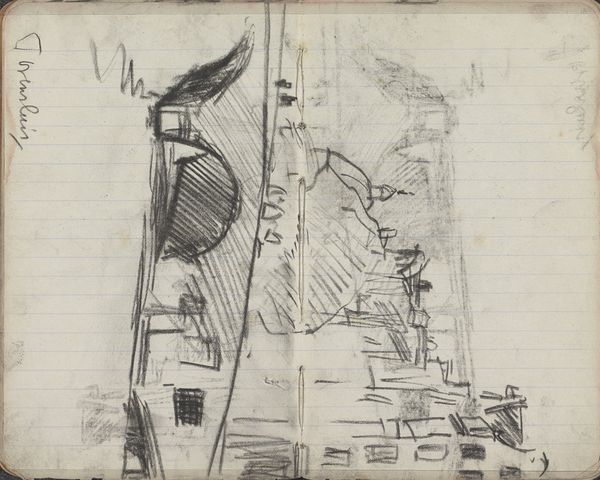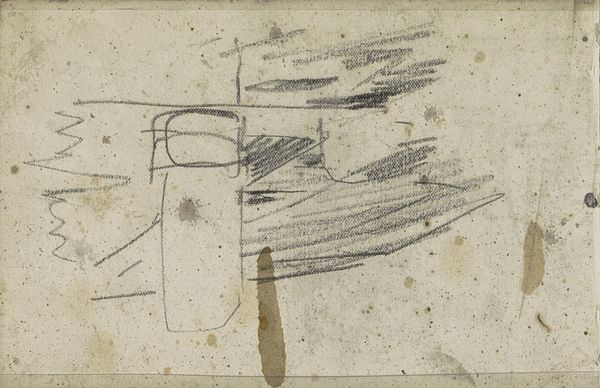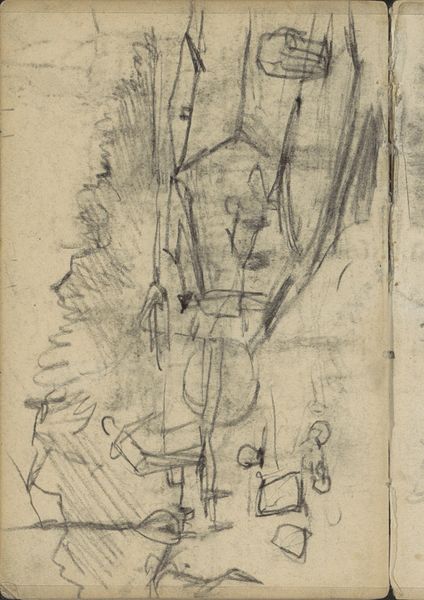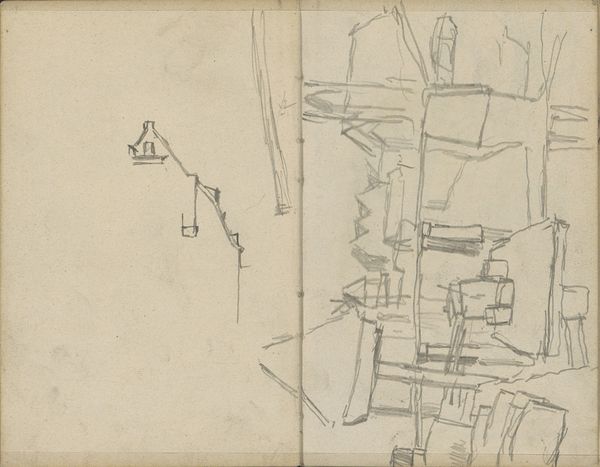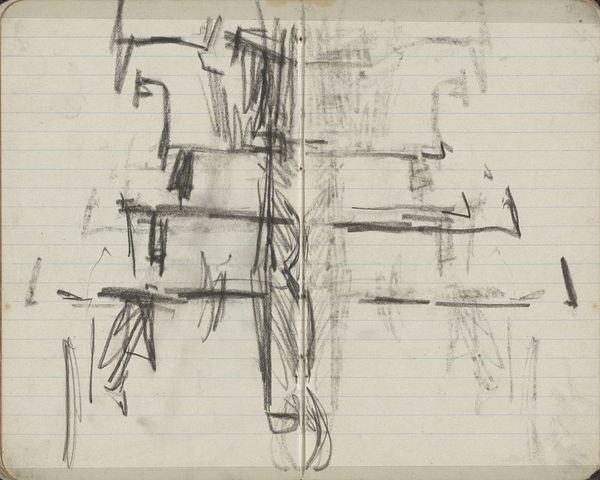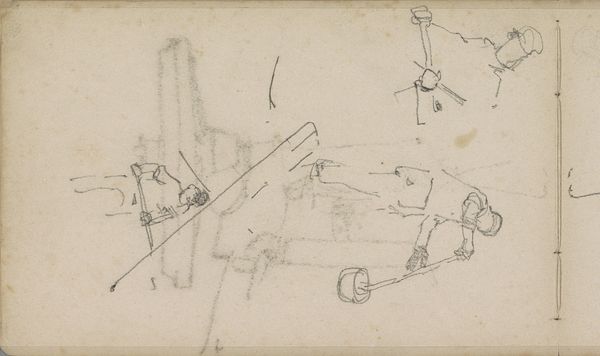
Copyright: Rijks Museum: Open Domain
Curator: George Hendrik Breitner created this drawing, titled "Kar of tram," around 1900-1901. It's a pencil drawing, likely from one of his sketchbooks, currently held here at the Rijksmuseum. Editor: It feels raw, almost dreamlike. The tram looks like it's hovering, suspended in time. It's definitely just a fragment, a snapshot from the artist's day, like something seen peripherally out of the corner of an eye and captured at lightning speed. Curator: Absolutely, Breitner was known for capturing fleeting moments of city life. What’s compelling is that it resists completion. Breitner lived and worked during a period of great social change and political reform, specifically considering public transit and mobility in Amsterdam. This artistic choice underscores broader conversations around societal flux and urban navigation during the fin de siècle era. The drawing’s ambiguity and open composition reflect the ever changing urban landscape. Editor: I can relate to the immediacy! The lines feel spontaneous, urgent, capturing movement and a sensory experience more than precise details. He’s sketching not just what he sees but what it feels like to see it. It’s like a haiku—minimal strokes evoke a larger scene, or, like trying to nail down a dream. Curator: His impressionistic approach makes it incredibly relatable for the contemporary viewer. Think about the politics surrounding space, public transit, urban development, and whose movements and narratives are privileged or marginalized by infrastructure and city planning. We could almost read his choice to draw something not immediately aestheticized— a tram car— as an embrace of the everyday realities faced by workers and citizens of Amsterdam in that time. Editor: It really is interesting to consider how this incomplete sketch feels radically modern. It's rough around the edges, and somehow invites my mind to play around the sketch, so I see and think beyond what is concretely shown. Curator: Precisely, and the "unfinished" aesthetic invites ongoing exploration of socio-political space in Breitner’s world. Editor: This piece speaks to the way that memory operates. Just like dreams, only traces persist in our consciousness. It resonates because it welcomes subjectivity! Curator: A poignant note on which to end. Thanks for joining me as we engaged with this powerful image. Editor: Pleasure as always.
Comments
No comments
Be the first to comment and join the conversation on the ultimate creative platform.
